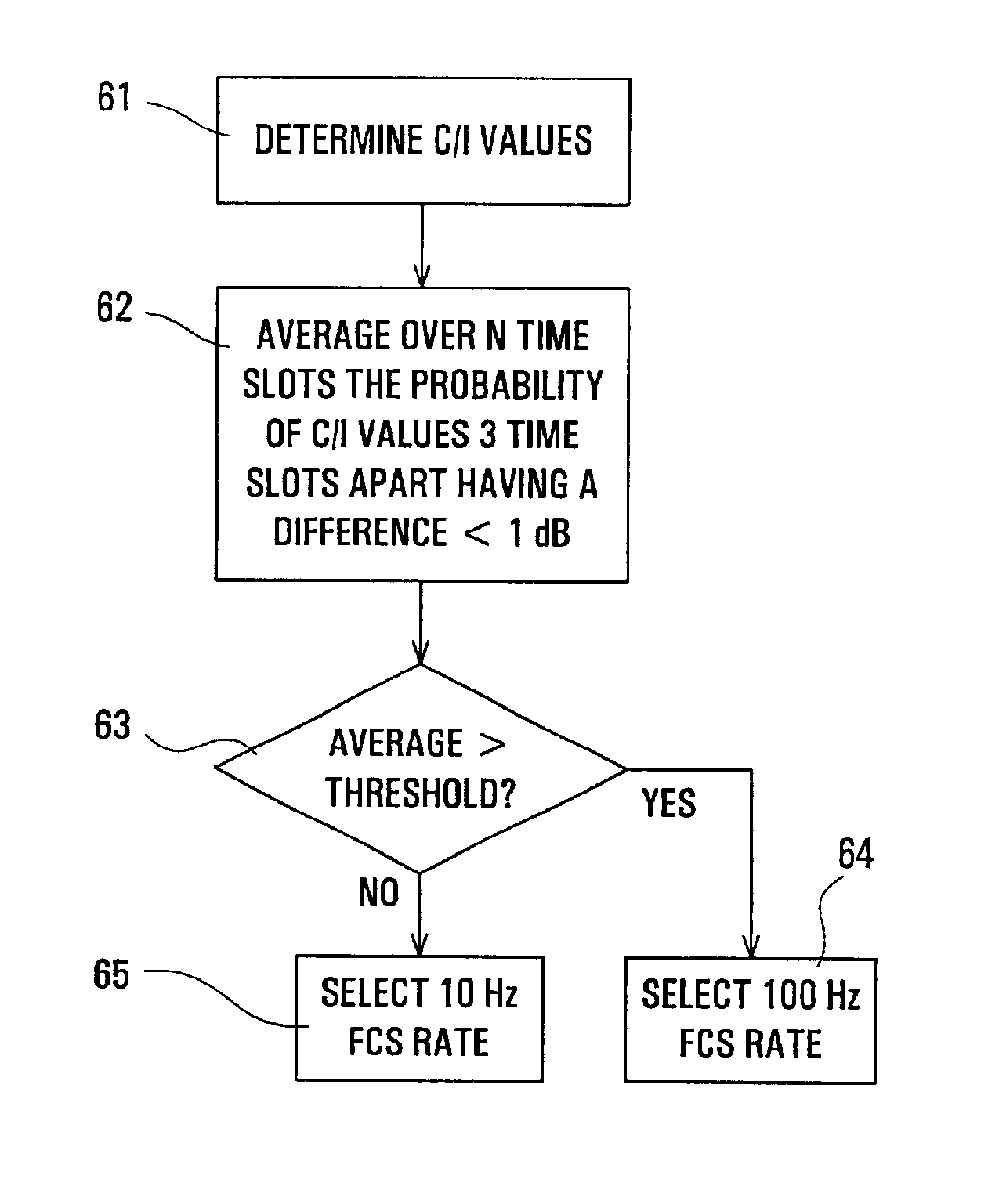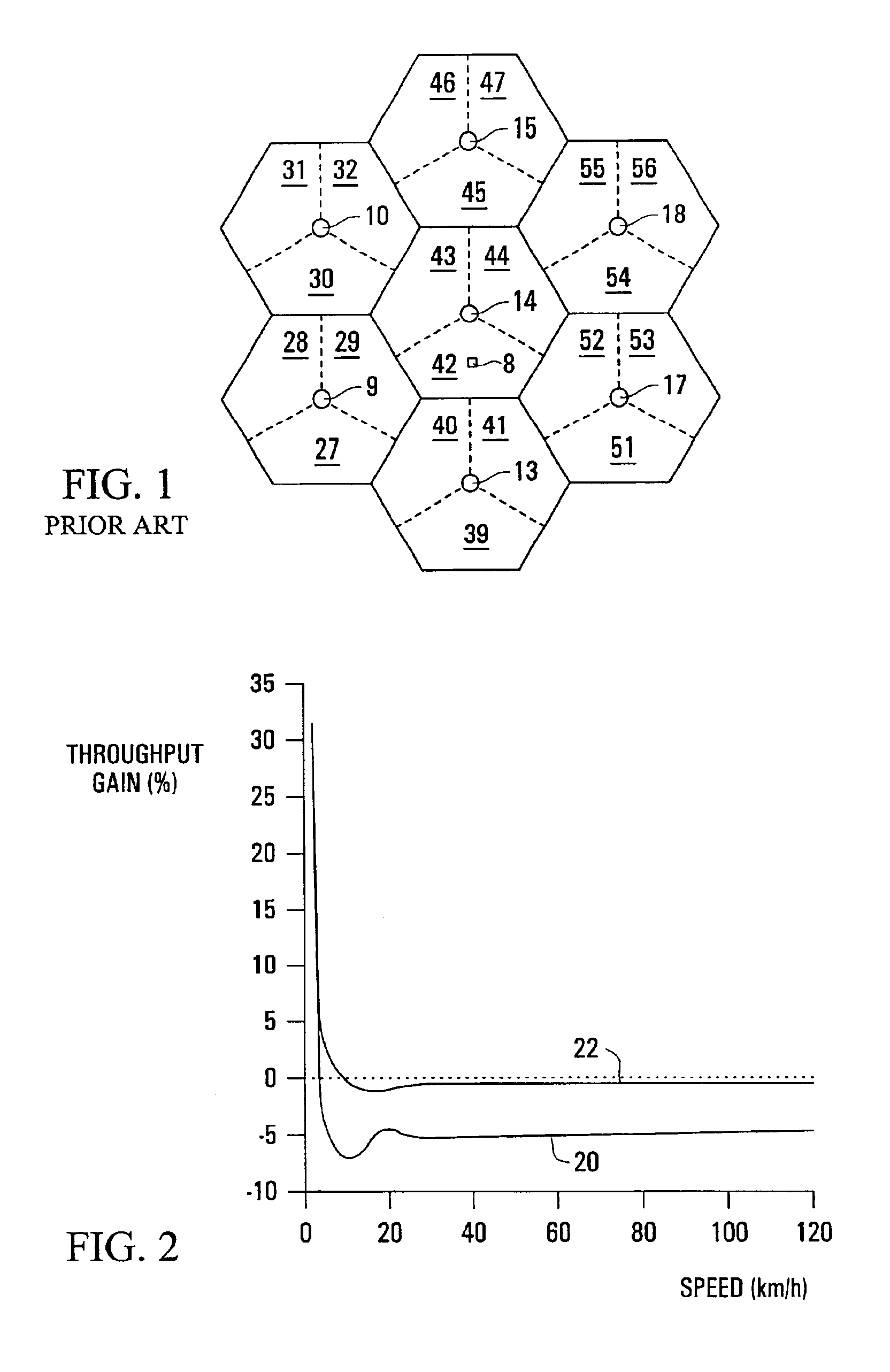Adaptive fast cell switching in cellular communications systems
a technology of cellular communication system and cell, applied in the direction of data switching network, wireless communication, digital transmission, etc., can solve the problems of unreliable prediction and overall significant degradation of performance of fcs, and achieve the effect of greater c/i reliability
- Summary
- Abstract
- Description
- Claims
- Application Information
AI Technical Summary
Benefits of technology
Problems solved by technology
Method used
Image
Examples
Embodiment Construction
Referring to the drawings, FIG. 1 illustrates a hexagonal cell layout representing part of a wireless cellular communications system, which comprises base stations 9, 10, 13, 14, 15, 17, and 18 each represented by a circle within a respective hexagonal cell comprising three sectors, the sectors being referenced 27 to 32, 39 to 47, and 51 to 56. The reference numbers of the base stations and sectors are selected so that for a base station numbered m, the three sectors of the cell associated with that base station are numbered 3m, 3m+1, and 3m+2. FIG. 1 also illustrates by a square referenced 8 a mobile terminal of the system, which is typically one of a large number of remote terminals operating in the system and communicating with the base stations. The description below refers only to the mobile terminal 8, but the same can apply to each remote terminal in the system.
In the system represented in FIG. 1, forward link (from a base station to a mobile terminal) rate adaptation and fas...
PUM
 Login to View More
Login to View More Abstract
Description
Claims
Application Information
 Login to View More
Login to View More - R&D Engineer
- R&D Manager
- IP Professional
- Industry Leading Data Capabilities
- Powerful AI technology
- Patent DNA Extraction
Browse by: Latest US Patents, China's latest patents, Technical Efficacy Thesaurus, Application Domain, Technology Topic, Popular Technical Reports.
© 2024 PatSnap. All rights reserved.Legal|Privacy policy|Modern Slavery Act Transparency Statement|Sitemap|About US| Contact US: help@patsnap.com










